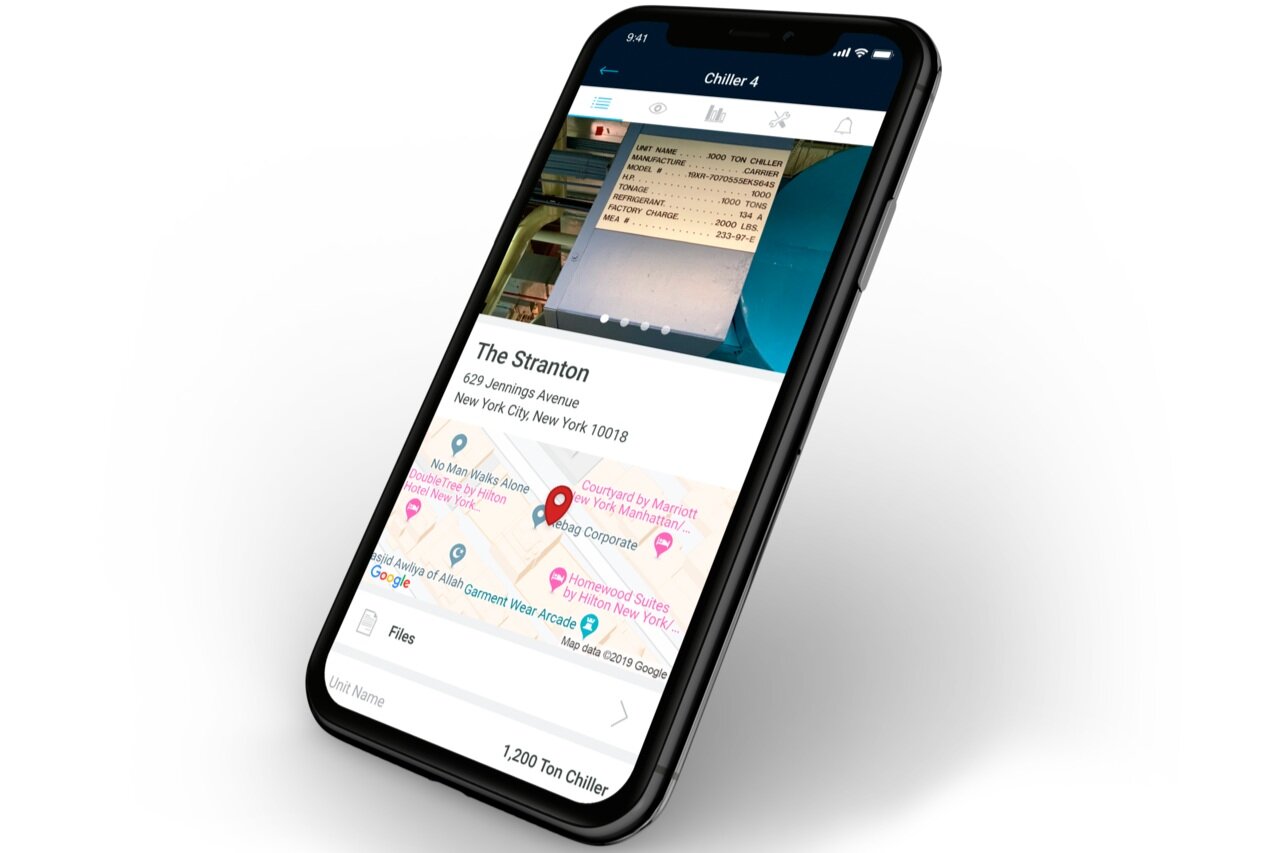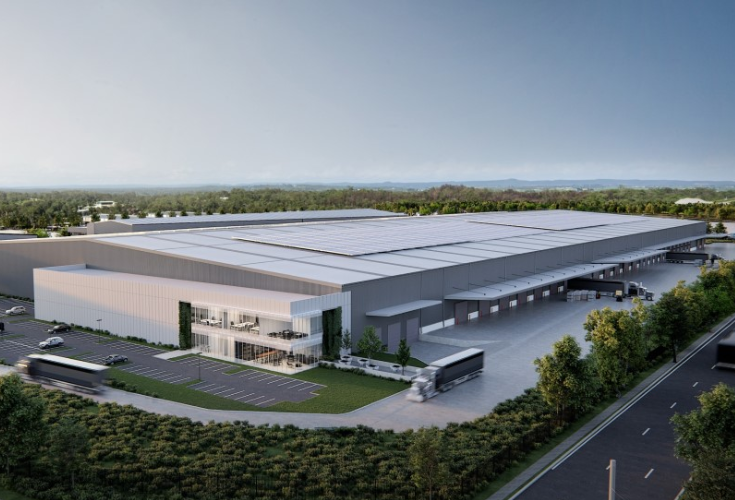Summary
- ASHRAE and CDC guidelines to reduce viral transmission can introduce unintended consequences to tenant health and equipment
- Implementing measures must be carefully considered by skilled engineers, which is simply not possible for every building in most portfolios
- Steps should be taken to move towards remote operations, so evaluations can be performed by the best engineers available
Ready or not, states are beginning to ease stay-at-home orders. While owners and operators scramble to supply their assets with the necessary PPE and cleaning materials, legal departments are working overtime to reduce liability and exposure to potential litigation.
The heightened tension is no different in the engineer’s office, where complying with CDC and ASHRAE guidelines presents major challenges, especially in the 72% of buildings that are over 20 years old.
When it comes to modifying a building’s HVAC system, it can feel like a Catch-22. Changes to reduce risk of viral transmission can increase the risks to tenant health in other ways. Worse, many of these adverse effects – higher moisture levels, continuous temperature fluctuations, and mold growth build-up on surfaces – may not immediately come to light because of the intense focus on the COVID-19 crisis.
With rental revenues falling and operating expenses increasing, it’s critical from both a cash flow and tenant health perspective that owners and operators fully understand the nuances involved in complying with these guidelines. To do so, efforts should be made to move towards remote operations, where the best engineers have access to the details of every building, regardless of where they are currently located.
Current Guidelines
CDC guidelines, as they relate to modifying HVAC systems to handle the COVID-19 pandemic, state the following:
- Increase ventilation rates
- Increase the percentage of outdoor air that circulates into the system
ASHRAE’s epidemic task force elaborated on these concepts:
- Transmission of SARS-CoV-2 through the air is sufficiently likely that airborne exposure to the virus should be controlled. Changes to building operations, including the operation of HVAC systems, can reduce airborne exposures
- Ventilation and filtration provided by HVAC systems can reduce the airborne concentration of SARS-CoV-2 and thus the risk of transmission through the air.
- In general, disabling of HVAC systems is not a recommended measure to reduce the transmission of the virus
The consensus appears to be that increasing both ventilation and filtration can reduce the risk of COVID-19 airborne transmission. While some of these recommendations may be implemented with little to no effect, following them blindly could lead to making the building’s interior conditions worse.
Unfortunately, ASHRAE’s official guidance must go through multiple rounds of approvals before anything new is issued and the chance of getting specific questions answered is low. The onus is on building engineers to apply these general principles to the complexities of their individual buildings.
Increasing Outdoor Air Ventilation
The specific guidance for increasing outdoor air ventilation includes:
- Switching ventilation to nominal speed at least 2 hours before occupancy ramps up and switch to lower speed 2 hours after the building is largely vacant
- Keep ventilation systems running, but at lower speeds on nights and weekends
- Ensure regular airing with windows (even in mechanically ventilation buildings)
- Keep bathroom ventilation 24/7 in operation
- Avoid open windows in bathrooms to ensure the right direction of ventilation
- Switch air handling units with recirculation to 100% outdoor air
- Switch fan coils either off or operate so that fans are continuously on
While studies have shown that increasing ventilation within a building can effectively reduce the potential for airborne viral transmission, doing so may have unintended consequences.
Increasing outdoor air intake into a building, either through mechanical equipment or windows, can also increase moisture infiltration. The effects of moisture depend on a variety of factors – current HVAC design and operation, exterior climate conditions, construction type, and the types of building materials used – but excess moisture is known to cause numerous downstream issues.
First and foremost, the resulting increase to indoor humidity may cause tenant discomfort and respiratory issues. In this case, tenants feel too warm and it’s human nature to lower the temperature on their thermostat or run their air conditioning system longer. However, this can increase the adverse effect, as it may end up pulling more moisture into an interior space due to diffusion.
Moisture not only makes tenants feel uncomfortable, it can also settle on various building materials and lead to microbial growth and mold, which have serious consequences for indoor air quality if not corrected.
This is where the evaluation skills of a talented engineer come into play. For example, ASHRAE specifically recommends not changing heating, cooling or humidification setpoints. However, it many cases, it may be necessary to adjust night setback settings along with increased ventilation to maintain proper humidity levels.
Likewise, determining whether the guideline to run on 100% outdoor air is possible given the building’s air change dynamics requires analysis by a skilled engineer. To add to the complexity, should additional outdoor air ventilation be introduced and controlled properly by the HVAC system, this excess outdoor air ventilation will need to go someplace. The capacity of the exhaust system to handle this additional ventilation must be closely evaluated as well.
The point is, as much as owners and operators want to believe they are in good shape because they’re following ASHRAE guidelines, the most likely scenario is that some assets are and other aren’t, based on the skills of the building engineer. While this may have been acceptable under normal circumstances, the stakes are higher in a post-coronavirus world and special efforts should be made to guarantee the right determinations are made in each property.
Increasing Filtration
It’s known that upgrades to filter efficiency are an effective way to remove unwanted airborne particles. However, careful consideration needs to be made when selecting the types of filters used for existing AHU systems.
Filters with higher MERV ratings have smaller openings in them, which capture more and smaller airborne particles. However, this also restricts the airflow passing through them. Increasing filter efficiency means increased resistance or static pressure within a system, which relates to a drop in airflow velocity across the filter itself. This can lead to an overall drop in total airflow being delivered to a space. In addition, if the velocity – particularly across a cooling coil – is too low, this can lead to coils freezing up.
In order to counteract this effect, the system must have a way to make up the difference of the pressure drop caused by the increased filter efficiency. In some larger AHU systems, simply increasing the speed of the fan may make up for the added pressure drop within the system. However, smaller AHU systems often found in multifamily and mid-size commercial buildings, do not have these capabilities due to their size and horsepower limitations.
Pressure drops also increase as the filters become dirty. Installing a higher efficiency filter may work fine initially while the filter is clean, but may not when the filter gets dirty, resulting in a decrease in total airflow.
Again, simply following guidelines may lead to unintended consequences. A skilled engineer needs to analyze the AHU system to determine if the system can accommodate a higher efficiency filter. Because it’s usually impossible to physically send engineers to every building, the information necessary for these analyses need to be made accessible remotely.

Other Considerations
ASHRAE’s recommendation to keep systems running longer hours, 24/7 if possible, may be warranted, but it’s not without its costs. Namely, the increased energy usage and the potential for overcooling the space.
Controlling energy costs has become increasingly important as rental revenues have begun to slip. Generally, owners and operators put tenant health and comfort ahead of energy savings, but if additional measures are implemented, it’s in everyone’s best interest to do so in the most cost-effective way possible.
Unfortunately, building management systems are designed with controls and automation in mind, not necessarily trending historical data and calculating the cost of operations. Determining the most cost-effective approach is significantly easier when there is equipment-level data to consult.
Likewise, digitizing operational processes with the help of mobile maintenance apps can help hold teams accountable for following the various maintenance-related guidelines from ASHRAE related to COVID-19:
- Inspect heat recovery equipment to be sure that leakages are under control
- Do not plan duct cleaning for this period
- Replace central outdoor air and extract air filters as usually, according to maintenance schedule
- Regular filter replacement and maintenance works shall be performed with common protective measures including respiratory protection
Finally, portable room air cleaners with HEPA filters as well as UVGI systems may provide added protection for indoor occupants. However, like any new system, the incorporation of these type of systems should be evaluated prior to installation to determine how and if operating these new systems will negatively affect the performance of the existing HVAC systems currently serving the respective buildings.
Conclusion
Obviously, the measures proposed by ASHRAE and the CDC should not be overlooked. At the same time, there are clearly many factors related to building operations and tenant health that can be negatively affected when trying to implement general recommendations.
There is no silver bullet, each building will have its unique requirements and capabilities. As such, in order to ensure that the best decisions are being made, owners and operators should centralize their critical information in digital repository.

This would enable the most talented engineers in the portfolio to analyze the AHU sizing and other relevant factors to determine the pros and cons of any recommendation in each specific scenario.
At the end of the day, it is much more valuable to invest in remote operations and spend time analyzing proposed changes than spending the extra time and money to implement them and finding that the work was detrimental in the long-term.
Interested in remote operations? Enertiv is here to help. Schedule a demo today.
CASE STUDY
Top 10 Global Asset Management Firm deploys Enertiv to get 100% utility data coverage across 100+ industrial sites
Light at the end of the tunnel
If you’ve made it this far, you’ve likely realized that implementing a utility data collection system in-house involves much more than installing meters and connecting APIs.
Yes, it’s possible to build it from scratch.
But it takes time, resources, and a learning curve that’s hard to fully anticipate.
Unless this is your core business, you’ll likely spend years learning lessons we’ve already paid for — through failed installs, messy integrations, and countless conversations with teams with real-world demands.
What may seem like a straightforward checklist today was, for us, a long path marked by challenges and meaningful breakthroughs.
Today’s sustainability leadership depends on speed and data precision. If you’re serious about hitting decarbonization targets, every delay in collecting accurate utility data is a missed opportunity.
That’s why going through this entire build process internally can actively slow your energy transition.
You don’t need to start from zero to reach net zero. You just need to avoid the mistakes that stall everyone else.





%20consider.webp)
